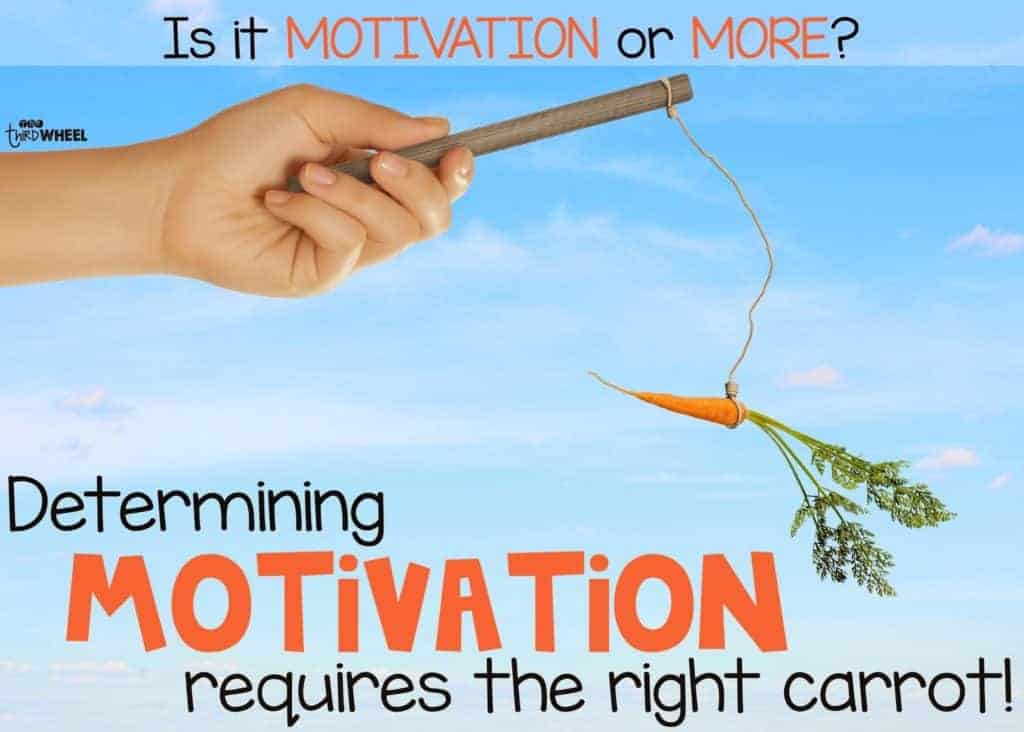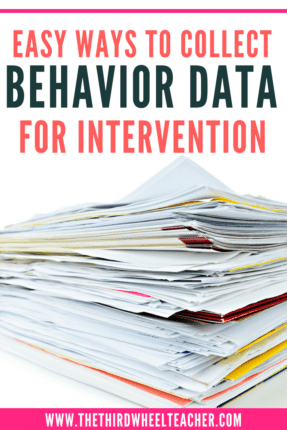Motivation or Skill Deficit? How to Figure it Out
Navigating the challenge of motivating students who refuse to work is a common dilemma for educators. There’s always that student who appears to understand while you’re guiding them, but when left to their own devices, the outcome is starkly different. Is it a lack of interest or a genuine misunderstanding? Then some students seemingly couldn’t care less about the task at hand. Is the work too daunting for them, or have they not yet recognized its value?
Today I will share a super quick, easy method of assessing whether the issue is motivation or a lack of knowledge.

Is Motivation a Skill?
Before we dive into the assessment itself, it is important to consider this question. The term motivation is used to describe why a person does something. Many consider it to be an underlying trait. Either students are motivated to do something…or they aren’t.
However, this isn’t true. Motivation, much like any skill, must be cultivated across time. Students can learn to enhance their motivation and the external motivation that is often needed can be paired with internal motivators to help drive students to build habits that will carry them long-term.
Individuals can learn to enhance their motivation through deliberate practice, strategies, and mindset shifts. Therefore, when conducting assessments to determine whether motivation or skill is a deficit for students, it’s crucial to consider motivation as a skill that can be developed and strengthened over time.
Ready to dive in?
The Can’t Do/Won’t Do Assessment
I learned about the Can’t Do/Won’t Do Assessment in graduate school while working in my graduate program in school psychology. At that point in my life, I didn’t quite understand this assessment’s power, but I tucked the technique away in my toolbox. I am so glad I did.
It is quick and easy.
In fact, it is the perfect data to ensure I provide the right intervention for my struggling learners.
Why you need to be using this assessment in your classroom
The truth is, it does no good to continue to give practice to an unmotivated learner who is choosing NOT to do the task.
The reality is that only makes things worse in the long run. However, a struggling learner does need that extra practice. Being able to distinguish between the two accurately is a challenge.
How to conduct a Can’t Do/Won’t Do Assessment.
Conducting this assessment is a relatively straightforward process, and it doesn’t require much time. Here are the basic steps.
1. Select your task.
All you really need to start teasing out whether motivation is the issue is two similar tasks. Perhaps it is a page of a test a student failed or a progress monitoring measure. Either can work.
The goal is not to make it long or complicated. It can even be an assignment that the student completed and didn’t quite perform as high as expected because you are just looking to see how the student improves without additional instruction.
Timed tests are great to use when you think motivation is impairing fluency because they only take a minute or two.
2. Identifying motivators.
Research has shown motivation for school wanes over time. However, all students have SOMETHING that motivates them. You need to figure out what motivates the student. For some kids, it is extra computer time or a special snack. Others like having a special classroom job or a shortened assignment. Whatever you pick has to be a highly desired reward and individualized to that student.

3. Have the student complete the initial task if it isn’t something they’ve already done.
If you’re using two tasks completed at the same time, you’ll want to start by administering the initial task without any specific motivator offered. This will be your baseline and will help you determine whether motivation is the core issue.
4. Offer the carrot to entice a better performance.
Show the student their original score and challenge them to beat it. Offer the reward as an incentive for improvement (even slight improvement). Then give the second task, and score it. If the student made any improvement, even the slightest, reward them.
5. Analyze the data.
Once you’ve got the two tasks, you’ll want to look at them side-by-side. Motivation was definitely part of the issue if the student improved by 15% or more.
If not, it is a skill deficit, and you’ll need to plan how to support the student to build knowledge and master the actual skill.
However, if the score goes up by 15% but is still not passing, it combines the two.
Next Steps to Assessing Motivation with Your Learner
That’s it! You can not target your intervention efforts more effectively based on your findings.
If motivation is the issue, it is time to set up a reward system that encourages quality work. You’ll have to reward a lot first and slowly decrease the frequency.
If it is a skill issue, you may need to gather additional information to determine if the child lacks a conceptual understanding or is struggling to self-monitor and correct. The Pencil Tap Test (see cheat sheet) can be a quick and easy tool.

If the issue is motivation and skills, then you can do an intervention plan to build skills and motivation!
Click below to grab your free cheat sheet on this quick and easy technique for figuring out the challenge of “motivating students who refuse to work” – is it a motivation issue or a knowledge gap?






